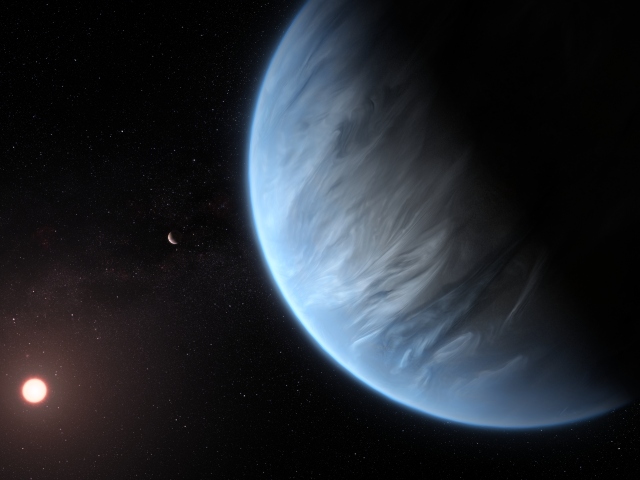[imagesource:wikicommons]
NASA’s James Webb Space Telescope may have discovered “tentative evidence of a sign of life on a faraway planet”.
NASA has indicated that the James Webb Space Telescope may have detected a molecule in the atmosphere of a distant exoplanet, which on Earth is only produced by life. The planet, K2-18 b, has been the subject of extensive study since astronomers announced in 2019 that they found signs of water vapour in its atmosphere.
Orbiting a red dwarf star in the constellation Leo, around 120 light-years from our own solar system, the planet is 8.6 times as massive as Earth. Subsequent studies revealed the water vapours might actually be methane, but with James Webb’s iPhone-like zooming, another closer looks at the planet is providing even more groundbreaking evidence.
It found the presence of carbon-bearing molecules – which include methane and carbon dioxide – which is fuelling speculation that K2-18 b might have a hydrogen-rich atmosphere and a water ocean-covered surface.
These features could potentially be signs of a planet that could bear life.
Observations made by Webb recorded the possible detection of a molecule called dimethyl sulphide (DMS), which on our planet is only produced by life. The majority of DMS found in Earth’s atmosphere comes from phytoplankton, microscopic organisms in the oceans.
True to their scientific nature, NASA has said that it needs study further to determine the exact cause of the molecule.
“Upcoming Webb observations should be able to confirm if DMS is indeed present in the atmosphere of K2-18 b at significant levels,” explained Nikku Madhusudhan, an astronomer at the University of Cambridge and lead author of the paper announcing these results.
NASA does however believe that the abundance of methane and carbon dioxide detected in the atmosphere, as well as a shortage of ammonia, support the hypothesis that there may be a water ocean underneath a hydrogen-rich atmosphere in K2-18 b.
The planet is believed to be an example of a Hycean world – a planet covered in a liquid ocean and a thick nitrogen atmosphere. Some astronomers think Hycean planets might be promising environments to search for evidence of life. “Our findings underscore the importance of considering diverse habitable environments in the search for life elsewhere,” explained Madhusudhan.
Astronomers are particularly interested in studying K2-18 b because it is also in the habitable zone of its host star – meaning it’s not too close nor too far from its sun. The space agency says that while Hycean worlds are predicted to have oceans of water, it is also possible that the ocean is too hot to be habitable or to be liquid.
“Although this kind of planet does not exist in our solar system, sub-Neptunes are the most common type of planet known so far in the galaxy,” explained team member Subhajit Sarkar of Cardiff University.
Their results were published in the Astrophysical Journal Letters.
“We are slowly moving towards the point where we will be able to answer that big question as to whether we are alone in the Universe or not.”
The team now intends to conduct follow-up research with the telescope’s MIRI (Mid-Infrared Instrument) spectrograph which they hope will further validate their findings and provide new insights into the environmental conditions on K2-18 b.
Watch on TikTok
So no pictures of waving aliens yet, but nobody can deny what a humbling day it will be when we can confirm life somewhere else. Considering that we’ve found more than 5 500 planets since the late nineties, it’s surely just a matter of time.
[source:euronews]





